by Leslie Layton
posted Dec. 11
Butte County’s abysmal COVID-19 vaccination rate is a symptom of an anti-science movement that has cost lives, polarized communities, and contributed to a “climate of denial,” panelists said at a statewide media briefing.
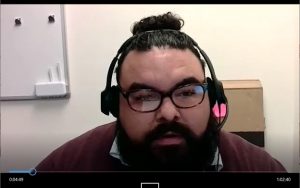
Five Butte County residents made up a panel at a briefing sponsored by Ethnic Media Services earlier this week to discuss this region’s COVID toll. They reminded a Zoom audience of 62 people that the county has been ravaged by wildfires, its residents slammed by soaring housing costs. On top of all that, misinformation about the virus has further polarized communities.
The youngest of the speakers, a 16-year-old Chico high school student, issued a plea to end the silence around COVID, which she said has disappeared from much of the public discourse. Maya Klein, a junior at Inspire School of Arts & Sciences, said a “culture and climate of denial” evolved as COVID increasingly became part of Butte County’s political “conflict zone.” (Read Maya’s essay on ChicoSol here.)
Two panelists called for a commitment from political leadership to protecting Butte’s communities.
The panelists at the Dec. 7 media briefing were Klein; Victor Rodriguez from the Butte County Department of Public Health; Kevin Thompson, who runs the Haven of Hope mobile shower units that serve wildfire evacuees and other displaced residents; Professor Lindsay Briggs from the Chico State department of health administration; and Angel Calderon, a member of the Gridley City Council.
Butte County, with about half its residents fully vaccinated, has one of the lower vaccination rates in the state — well below the state as a whole. On average in California, 69 percent of residents are fully vaccinated. COVID has taken some 321 lives in Butte County, and during surges, inundated hospital ICUs.
COVID hospitalizations peaked on Sept. 23 of this year, with the Delta variant sickening mostly unvaccinated and under-vaccinated people, said Victor Rodriguez, a health education specialist with the county. The California State Covid dashboard shows the county’s infection rate running at about twice the rate for the state as a whole that week.
California Department of Public Health graphs also show there were no empty ICU beds in Butte County on Oct. 2 as the surge continued. Even then, the Butte County Board of Supervisors majority declined to recommend an indoor masking rule, a gesture that would have shown political support for a Public Health-imposed mandate that, perhaps unsurprisingly, never happened.
As the pandemic set in last year, the county health department quickly moved to establish partnerships with community organizations that helped it gain entry into rural and low-income communities and open a Covid unit, Rodriguez said. By the time vaccines were available, it was able to set up “mass vaccination sites” and mobile clinics.
Still, getting people vaccinated in a county that had undergone trauma and turmoil – in a region where leaders had denounced state public health mandates – must have felt like a challenging task.
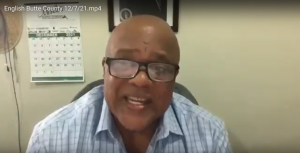
Thompson, a pastor at a south Oroville church, said he’s been saddened by the stream of requests he’s received for eulogies.
“We’re burying so many people who have been affected,” Thompson said. “Funerals have been backed up for months at the Southside [Oroville] Community Center.”
Prior to the Dec. 7 briefing, Thompson told ChicoSol: “I actually think it’s reprehensible that our leaders are not doing more to safeguard the community. People are bamboozled into thinking they’re doing the right thing by not getting vaccinated.”
Butte County’s “perfect storm”
Professor Briggs described for ethnic media reporters how a “perfect storm” evolved in Butte County, an information vacuum that made mandates unpopular and left leaders “free” to approach the pandemic as they pleased. The county has been going through “unprecedented change” in the past couple of years, she said.
First there were the 2017 failures affecting the Oroville Dam spillway that forced evacuations, and then wildfires intensified by climate change.
“We’ve been living in fire seasons for a really long time, which creates a lot of fear and distrust,” Briggs said. “It comes along with the idea that the things that are supposed to be keeping us safe are not keeping us safe … there’s an idea that government has failed us.”
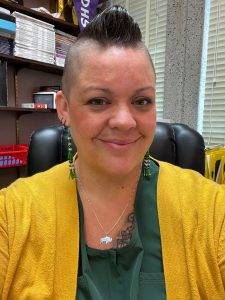
Briggs said that in addition “anti-science attitudes” became more prominent as some citizens found the changing nature of information about the virus confusing. “In Butte County we’re lacking a lot of strong leadership to say, ‘We need to take this stuff seriously and here’s how science and evidence works,’” Briggs added.
“Most people are getting their news and information from social media,” she said, “which as we know is rife with misinformation … a lot of that has created this disinformation that has been weaponized. Our leadership has really failed us in this county.”
Briggs and Thompson noted as an example the decision by the Oroville City Council to declare a “constitutional republic” – a move designed to demonstrate opposition to the governor’s COVID mandates. “Constitutional republics have sidetracked the people,” Thompson said.
The divides in Butte County
Gridley’s Calderon said farmworkers in his town have “suffered tremendously” in the pandemic and describes the agricultural community that is more than 40% percent Latino as “like the moon – you know it’s there but you don’t think about its needs.”
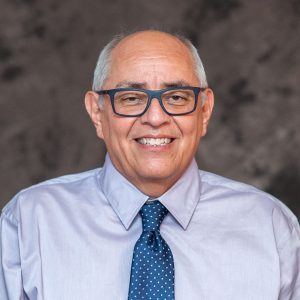
In July 2020, ChicoSol reported on the disproportionate number of cases in Gridley, which then claimed 35 percent of the county’s total case count. The communities of Gridley and Biggs, which are now reported as a single entity by Butte County Public Health, have a much smaller share of the total case count now — about 10 percent. Still, Gridley and Biggs have only about 4 percent of the county’s total population.
The ChicoSol story prompted the Hispanic Resource Council to launch a bilingual prevention campaign that led to a partnership between the Council, the county Public Health Department and Enloe Medical Center, and a program called “Unidos Contra El Covid.”
At the Dec. 7 briefing, Public Health released data suggesting that outreach and other efforts like it have had success. Gridley, like Chico, has a vaccination rate above the county average. And for Butte County as a whole, people identifying as Hispanic or Latino have a vaccination rate almost as high as whites.
The highest rates of vaccination in Butte County, by race and ethnicity, are among Pacific Islander (63.4%) and Asian American (57.4%) populations. The white population follows with a vaccination rate of 47 percent, followed closely by the Hispanic/Latino group with 44.5 percent. The Hispanic/Latino group is the largest ethnic minority in this county of 220,000 residents.
Butte County vaccination rates by ethnicity and race
Native Hawaiian/other Pacific Islander 63.4%
Asian American 57.4%
White 47.1%
Hispanic/Latino 44.5%
African American/Black 40.4%
Native American/Alaskan Native 39.2%
Multi-race 27.5%
Butte County Public Health says it was too understaffed at the beginning of the pandemic to quickly extend its reach through a county that covers more than 1,600 miles — with only about half the population concentrated in the city of Chico. But the department has since increased and diversified staffing, Rodriguez said.
Briggs agrees the public health department has managed to raise awareness and get supplies to communities of color. One of the biggest problems facing Butte County Public Health, she says, is a culture of individualism in the white community.
“Butte County is overwhelmingly white with strong pockets of ethnic diversity,” Briggs said. “There are cultural implications of that.”
Many white people are “able to insulate themselves for a long time, but then when Covid hits their families they have a change in attitude,” she said.
Almost since the beginning of the pandemic, the department has met stubborn and angry resistance from a part of the citizenry that is vocal. Protests were routine during the past year at both the health department and at meetings of the Chico Unified School District Board of Trustees.
The health department often faces an onslaught of derision on its Facebook page from people who view COVID protocols as a civil liberties problem, while in a “Covid Responsible Places” group, members worry over where they can go and feel protected by basic prevention protocols.
But to some extent, resistance to vaccination seems to cut across the county’s ethnic divides, even if vaccine-wary citizens aren’t all picketing the health department.
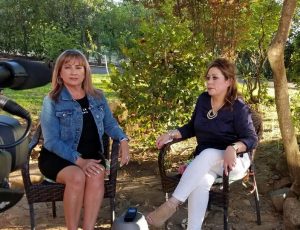
Tina Guadiana, who appears in a Unidos public service video promoting COVID prevention, has personal experience with the rumors that frighten people from getting the vaccine. Guadiana, a resident of Palermo who is fully vaccinated, lost a family member in Mexico and many friends in both Oroville and Gridley to the pandemic. Her son became ill with Covid, recovered, and still refuses the vaccine.
Guadiana said the older members of her family are vaccinated and have paid heed to public service announcements on Spanish-language radio and television. But the younger generations plunge into the Internet “where all the alarmist stuff is.” She routinely tells her son – so far without success – Por favor, póntelo. (Please, get the vaccine.)
“We’ll continue to die if we don’t have our leaders stand up and tell us the truth” — Kevin Thompson
Thompson and Calderon noted that some people are too busy trying to survive to worry about Covid prevention. Farmworkers fear getting tested because they can’t afford to miss work; wildfire survivors worry about feeding their families and finding a roof.
But the disinformation campaign – that the vaccine will have intentional or unintentional side effects – is one of the most pressing problems that distress them. “We’re still losing people, we’re still suffering,” Calderon said.
Thompson wants to see disinformation addressed by leadership at all levels.
“Rumors have become stumbling blocks in our community,” Thompson said. “We’ll continue to die if we don’t have our leaders stand up and tell us the truth. White people and people of color are paying the price for the decisions made by our leaders.”
“We want to hear real leadership,” Thompson said. “We want people to tell us the truth and give us the resources to make sure our people are protected.”
Leslie Layton is editor of ChicoSol. The media briefing was sponsored by Sierra Health Foundation, the California Department of Public Health and Ethnic Media Services.

“Most people are getting their news and information from social media,” she said,
That’s her opinion . How the hell would she know anything about where I get my information? That’s what’s wrong with your “dialog” – too many assumptions, too much opinion.
So, what’s your solution? The final solution? Round us up in cattle trucks and force us to take the vax? More public bullying? What?
I asked if Chico police officers are vaccinated and was told by the Chief’s staff that releasing that information is a violation of HEPA laws. So, had to declined a CC4J meeting with them since it was to be held in a small conference room.
Are our police vaccinated? Who knows! I called the Chico Enterprise Record & asked if they could find out. No response.
It is very worrisome that in Butte County we do not know if our 1st responders are vaccinated…..particularly law enforcement!
Some police reform groups think that unvaccinated police have the potential of being another form of police violence. It is definitely thumbing the nose at community norms & safety. Police power ‘trumping’ community health.